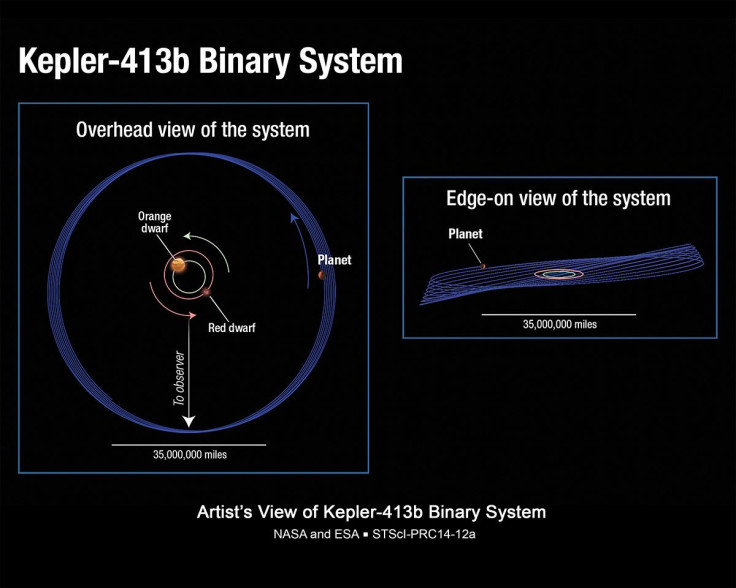Meet Kepler-413b, The Planet That ‘Wobbles’ Like A Top Discovered By The Kepler Space Telescope

NASA’s Kepler Space Telescope has discovered a planet located 2,300 light-years from Earth with one very unusual orbit. Kepler-413b is wobbling on its spin axis, like a “child’s top” which creates an erratic orbit around a pair of orange and red dwarf stars and unpredictable seasons.
According to NASA, Kepler-413b wobbles so much on its spin axis that the planet’s tilt “can vary by as much as 30 degrees over 11 years.” That kind of variation dramatically affects the seasons on the newly discovered planet, for a comparison, Earth only wobbles 23.5 degrees over the course of 26,000 years. The plant orbits its two host stars every 66 days and its wobble also affects its orbit as well as the ability to see the planet from Earth.
Kepler-413b is classified as a Super Neptune, a gas giant with a mass 65 times that of Earth, notes NASA. The researchers also ruled out the possibility of liquid water on the planet as it is too hot and orbits too closely to its host stars.
Kepler-413b’s wobble causes it to move up and down continuously and based on the planet’s position in orbit prevents researchers from observing the planet from Earth. Veselin Kostov, the principal investigator, said in a statement, “Looking at the Kepler data over the course of 1,500 days, we saw three transits in the first 180 days -- one transit every 66 days -- then we had 800 days with no transits at all. After that, we saw five more transits in a row.”
The researchers discovered the planet by observing the changes of brightness in the host stars as the planet travels in front of the objects, known as the transit method. As for why Kepler-413b wobbles so much, astronomers are still looking for an answer but another object, such a third star or planet, that have a gravitational influence on the planet.
© Copyright IBTimes 2024. All rights reserved.






















